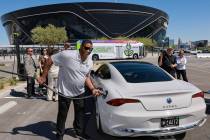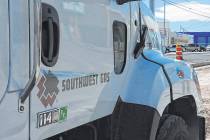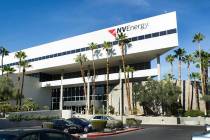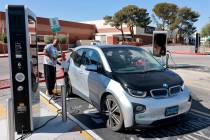Solution to energy woes may be blowin’ in wind
Back in the '60s, Bob Dylan sang "The answer, my friend, is blowin' in the wind." At the time, I don't think he had renewable energy on his mind, but wind energy is certainly a large part of the answer to today's energy puzzle.
All across America, homeowners are working to save energy and reduce their dependence on fossil fuels. There's been a lot of talk about solar power, especially in Nevada, but what about wind? Wind energy is a great complement to solar since it works day or night. Along with geothermal and hydro energy, these renewable energy sources are the key to our transformation to a post-carbon economy.
There is a lot of confusion about wind energy, especially regarding small-scale, home-based systems. One misconception is the roof-mounted turbine. I've had many clients ask about these. I've yet to find anything that I would recommend, for a couple of reasons. First, the wind quality at ground (or roof) level is not ideal for generating energy. It is often turbulent and the velocity is much slower due to ground drag.
Second, mounting a device of that nature to the roof of a typical home is asking for trouble. The wind pressure on the device creates a load which must be transferred to the supporting structure. Most homes are not designed to withstand this kind of stress. Even if they were, there a good chance that all that spinning could lead to some noise and vibration that could make home life less than ideal.
To avoid ground drag and maximize output, the best place for a wind turbine is well off the ground, significantly higher than surrounding obstacles. Most small wind turbines are mounted on a tower. The rule of thumb is for the lowest part of the rotor to be at least 30 feet higher than any obstacles within 500 feet. If immature trees are part of the equation, figure their impact based on what their mature height will be. Wind systems can last a long time.
Perhaps the most common issue is that of sufficient wind resources. Most people interested in wind energy are convinced that their site is plenty breezy, but sometimes that is not the case. For example, spring is typically the windiest season in Southern Nevada, but it is the yearly average wind speed that is important. Our valley's yearly average is usually less than ideal for producing wind power.
Most ground-based neighborhood weather stations indicate average yearly wind speeds of 5 or 6 miles per hour. The National Climatic Data Center indicates 9.2 miles per hour but does not say at what elevation. The best wind maps I've found indicate a range of 8.5 to 14.3 miles per hour at a height of 20 meters (65 feet), and that is in the windiest part of the valley. With the mountains and canyons that surround us, wind speed can vary significantly from site to site.
One popular wind turbine, the Skystream 3.7, is rated at 2,400 watts, but that's only with a wind speed of 29 miles per hour, much more than we have here. Assuming an average of just more than 12 miles per hour, that turbine would generate about 400 kilowatt hours per month, or roughly $570 a year in electricity. At 10 miles per hour, it is less than half. The ratio of power generated vs. maximum power rating is called the capacity factor.
The new WindGenerations (windgenerations.com) rebate program can help offset the cost of a small wind system. Unfortunately, the rebate is not based on performance, just system capacity. Anyone considering such a system should do his or her homework, know the capacity factor at the site and work with a reputable, experienced contractor. Wind energy might be a good investment in the right location and a quality site survey is one way to tell. Even with the financial incentives, no one wants to spend money on a system that will not produce to one's expectations.
As with many things in life, we make the best decisions when armed with the facts. There is a growing body of quality information on wind energy. Seek it out. After all, the answer is blowin' in the wind.
Steve Rypka is a green living consultant and president of GreenDream Enterprises, a company committed to helping people live lighter on the planet. Steve can be reached via e-mail at steve@greendream.biz. More information relating to this column is posted at www.greendream.biz.

















